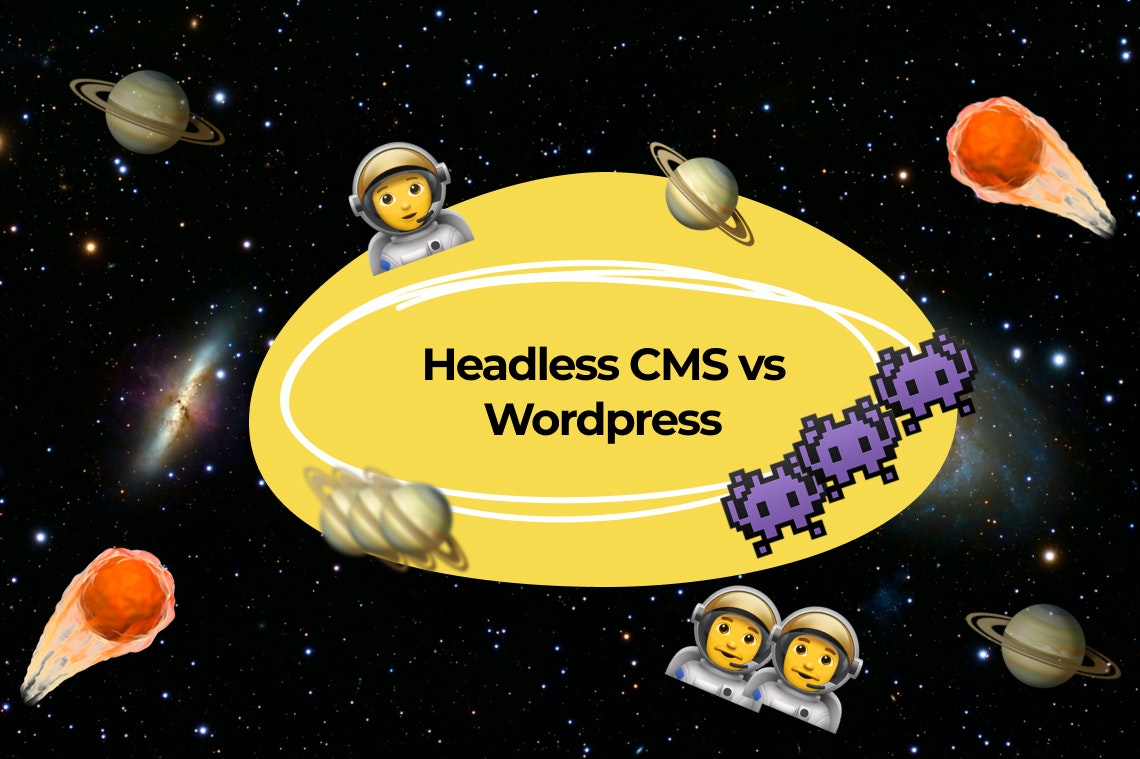Headless CMS vs Wordpress. Should I migrate my website?
Headless CMS - what they are, how they work and differ from traditional CMSes - explained.
September 23, 2021
4 min read

WordPress is dying. While it is still the most popular CMS in the world today, as more than 35% of all websites on the Internet are using it, it is a sustainable platform no more. PHP, the programming language WordPress is operating on, loses its popularity every day. Many developers, notably including WordPress creator Matt Mullenweg, are sure that headless is the future of web development.
CMS means a content management system. It is a web application that allows site owners, editors and authors to manage their websites and publish content without any coding knowledge. Let’s take a closer look at what Headless CMS is, how to use it and why you would want one.
As technology evolves, more and more options appear to make creating websites simple, as well as improving the website’s performance and having more control and security over the applications.
Nowadays, the majority of developers use JavaScript and ReactJS. Hence it is so much easier to find a person to maintain and support the website after its launch. What’s more, as both the front-end and back-end are written in JavaScript, you do not have to find two separate developers.
Is it goodbye to WordPress?
WordPress architecture is monolithic, which means the user interface and data access are joined on the same platform. REST API on WordPress has been introduced to enable using it in a headless way. This allowed developers to utilise it as a back-end and having the front-end in a different project.
Separated, models and controllers are packed on the WordPress side, in charge of data manipulation and database interaction, while the front-end only connects with REST API via an HTTP client.
There are some disadvantages, though, as you will still need to configure and update WordPress, ensuring it is secure. Moreover, you will remain dependent on their technology for the development of new functionalities. To use an analogy, it is like trying to upgrade an old bike, making it heavy and in need of constant observation, instead of just going for something new.
Not only a Headless CMS offers the same services that WordPress offers, but also resizing or reformatting of image CDNs on the fly, and additional security through S3 backups. This setup assures your freedom, security and comfort, and greatly improves the performance of your application without any third-party services.
So why would I want to migrate to a headless CMS?
A Headless CMS will give you the freedom to concentrate solely on your front-end project, as it sorts out the content management and the content delivery, while you can take care of the execution.
Such a setup will be beyond useful for companies that have multiple websites and a desire to make their processes easier and cost-effective. A headless architecture basically lets centralise content management in a single administration interface, as the APIs will be consumed by the company’s different web pages.
In addition, a headless CMS allows to deliver a front-end project that represents the organisation brand by making all the products launched by the organisation look and feel in the same way, because it’s managed in the same administration panel.
To sum up, you have an administration panel already configured and maintained — sometimes even hosted — for you. The only thing you need to start creating content is to create an account. It’s especially useful in a case when you are not the only one who will edit the content. A headless architecture can make it easier for content creators or marketers to understand the workflow.
Well, should I consider migrating to the headless CMS?
The Headless CMS makes sense when it comes to optimising performance. If you have a personal website, controlled by you and you alone, then a headless setup might be unnecessary. On the other hand, if more people are involved in the project, then adopting a headless architecture might be a great option to improve performance of your website and the quality of your front-end project.
There are other benefits too. For example, because the front-end is fully independent, you can upgrade your project to the latest framework without any regard to the back-end.
Moreover, the Headless CMS simplifies the process of creating and scaling a website. You don’t depend on different administration panels, so you are able to create multi-platform projects and change how the whole application looks without modifying the structure of its content.
All in all, going ‘headless’ saves you time compared to a traditional CMS. Your Headless CMS will maintain the platform's security and updates for you. If there’s a bug or a new feature required, the Headless CMS team will develop it and you just need to start using it. Not only does it improve the user experience and design for you, it also helps with improving the performance of the database, so you can get your content instantly.